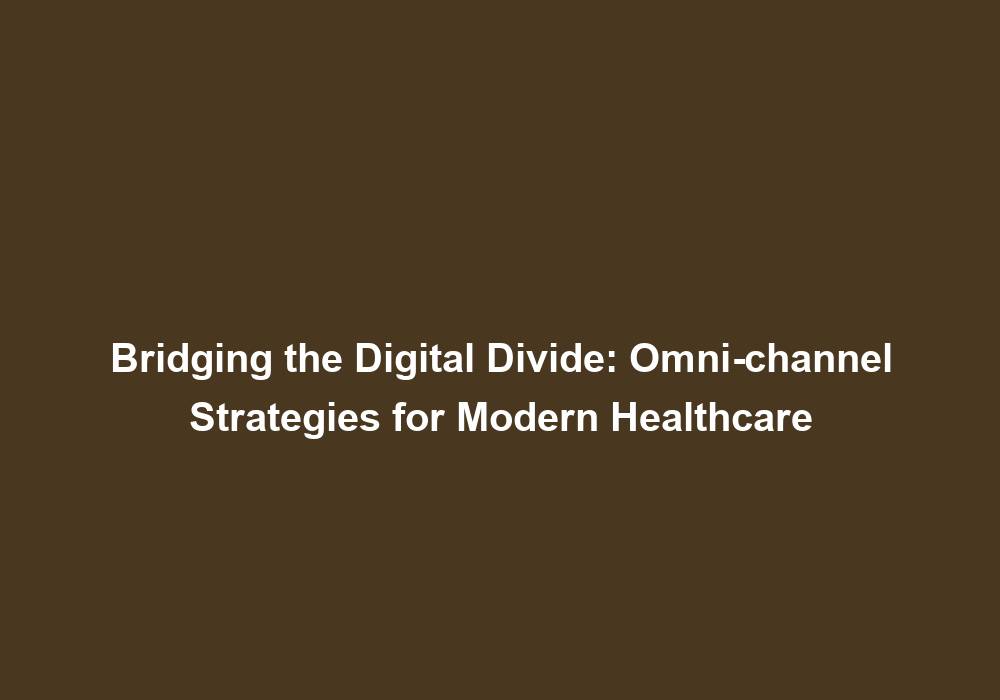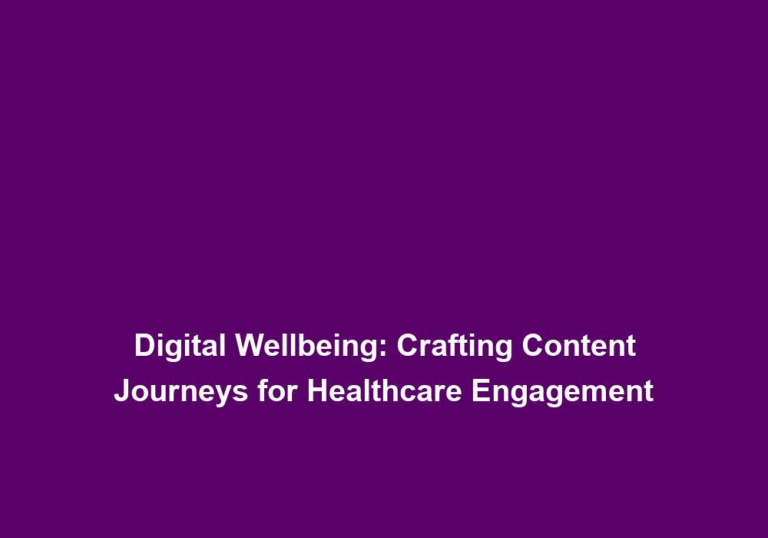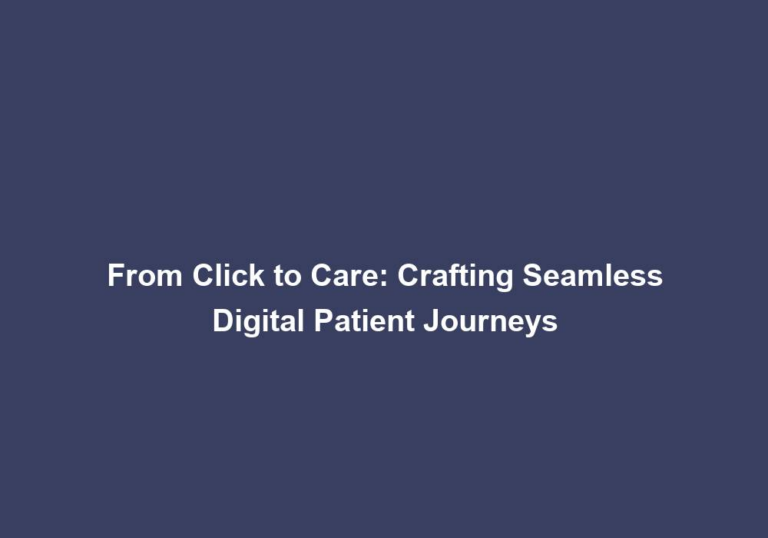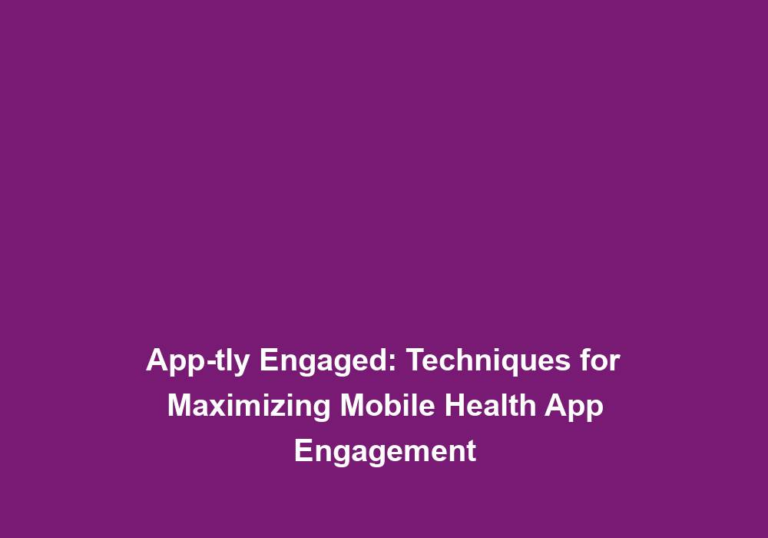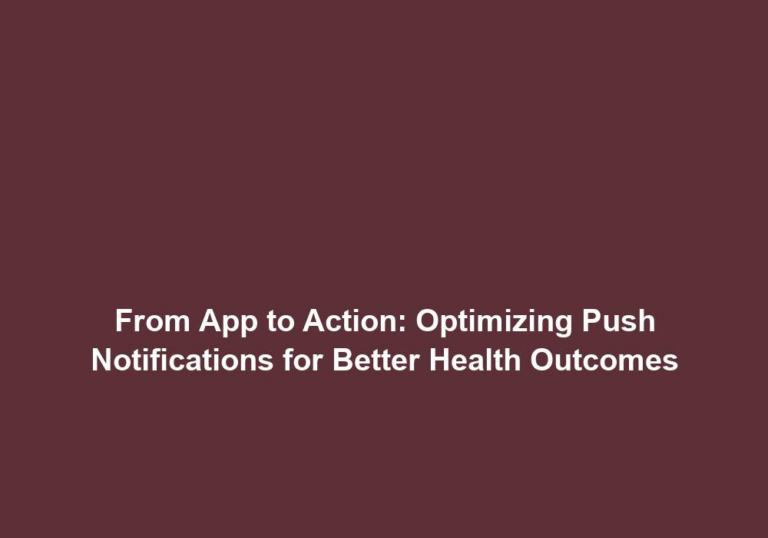Bridging the Digital Divide: Omni-channel Strategies for Modern Healthcare
The healthcare industry has undergone a significant transformation with the digital revolution. Technology has enabled healthcare providers to enhance patient care, improve operational efficiency, and streamline processes. However, it is crucial to recognize that not everyone has equal access to these digital advancements. This creates a digital divide in healthcare, where certain populations may be left behind due to limited internet access, technological literacy, or other socio-economic factors. To bridge this divide, healthcare organizations must employ omnichannel strategies that ensure equitable access to healthcare services and information for all individuals.
Understanding the Digital Divide in Healthcare
Before delving into the strategies for bridging the digital divide, it is crucial to grasp the factors contributing to this divide. The digital divide in healthcare can be attributed to various reasons, including:
-
Limited Internet Access: In some regions, individuals may lack reliable internet connectivity, making it challenging to access digital healthcare services and information. This lack of access can be due to geographical limitations, infrastructure issues, or financial constraints.
-
Technological Literacy: Not everyone possesses the necessary skills to navigate digital platforms, hindering their ability to utilize online healthcare resources effectively. Limited digital literacy can be a result of age, educational background, or lack of exposure to technology.
-
Language and Cultural Barriers: Language and cultural diversity can act as barriers for individuals seeking healthcare services online, especially if platforms do not cater to their specific needs. Providing content in multiple languages and incorporating cultural nuances can help overcome these barriers.
-
Socio-economic Factors: Individuals from low-income or marginalized backgrounds may face financial constraints preventing them from owning digital devices or accessing the internet regularly. Economic disparities can limit access to technology, exacerbating the digital divide in healthcare.
Addressing these underlying factors is crucial in ensuring that healthcare services are accessible to all. By adopting omnichannel strategies, healthcare organizations can bridge the digital divide and provide equitable care to diverse populations.
Omni-channel Strategies for Bridging the Divide
-
Leveraging Multiple Channels: Healthcare providers should adopt a multi-channel approach, ensuring that patients can access services through various means. This includes offering traditional in-person appointments, telehealth consultations, as well as phone-based consultations. By providing multiple communication channels, healthcare organizations can cater to individuals with varying digital capabilities and preferences. Additionally, offering services through mobile applications can further expand access to healthcare for individuals who primarily use smartphones.
-
User-friendly Digital Platforms: When developing digital platforms, healthcare organizations must prioritize user-friendliness. By designing intuitive and easy-to-navigate interfaces, patients with varying levels of technological literacy can access and utilize online healthcare services effectively. Incorporating language translation features can also help overcome language barriers and facilitate access for non-English speaking populations. Furthermore, ensuring that the platforms are optimized for mobile devices can enhance accessibility for individuals who primarily use smartphones or tablets.
-
Community Partnerships: Collaborating with community organizations and public libraries can help extend internet access to underserved populations. By establishing partnerships, healthcare providers can offer on-site digital access points and support individuals who may lack internet connectivity at home. Mobile health clinics or community centers equipped with internet-enabled devices can serve as hubs for individuals to access digital healthcare services and information.
-
Digital Literacy Programs: Developing digital literacy programs that educate patients on using digital healthcare platforms can empower individuals who may be unfamiliar with technology. These programs can be conducted in partnership with community organizations, schools, and local government entities to reach a broader audience. Providing step-by-step tutorials, video demonstrations, and workshops can help individuals develop the necessary skills to navigate digital platforms confidently.
-
Personalized Patient Support: Recognizing that not all patients will be comfortable with digital platforms, healthcare organizations should provide personalized assistance to individuals who require additional support. This can include dedicated helplines, online chat support, or even home visits for patients who struggle with technology. Offering individualized support ensures that all patients can access and benefit from digital healthcare services, regardless of their technological literacy or comfort level.
-
Accessible Content: To cater to individuals with varying literacy levels or disabilities, healthcare organizations should ensure that their digital content is accessible. This includes using clear language, providing audio or visual aids, and adhering to accessibility standards to accommodate individuals with visual or hearing impairments. Offering alternative formats, such as audio recordings or large print versions of educational materials, can further enhance accessibility for individuals with specific needs.
-
Data-driven Decision Making: Leveraging data analytics can help healthcare organizations identify gaps in their digital services and tailor solutions accordingly. By continuously monitoring and analyzing data, organizations can make informed decisions to improve accessibility and enhance the overall patient experience. Understanding patient demographics, preferences, and usage patterns can guide the development and optimization of digital healthcare platforms.
-
Continuous Improvement: Bridging the digital divide is an ongoing process. Healthcare organizations must continuously evaluate and refine their omnichannel strategies to ensure they remain effective and responsive to evolving patient needs. Regular feedback collection and analysis can help identify areas for improvement and drive meaningful change. By actively seeking input from patients and incorporating their feedback into the development and enhancement of digital healthcare services, organizations can ensure that their offerings meet the diverse needs of the population they serve.
In conclusion, bridging the digital divide in healthcare is crucial for ensuring equitable access to healthcare services and information. By adopting omnichannel strategies, healthcare organizations can cater to diverse populations, providing multiple access points and personalized support. Through partnerships, digital literacy programs, and user-friendly platforms, the digital divide can be significantly reduced, allowing all individuals to benefit from the digital transformation in healthcare.

